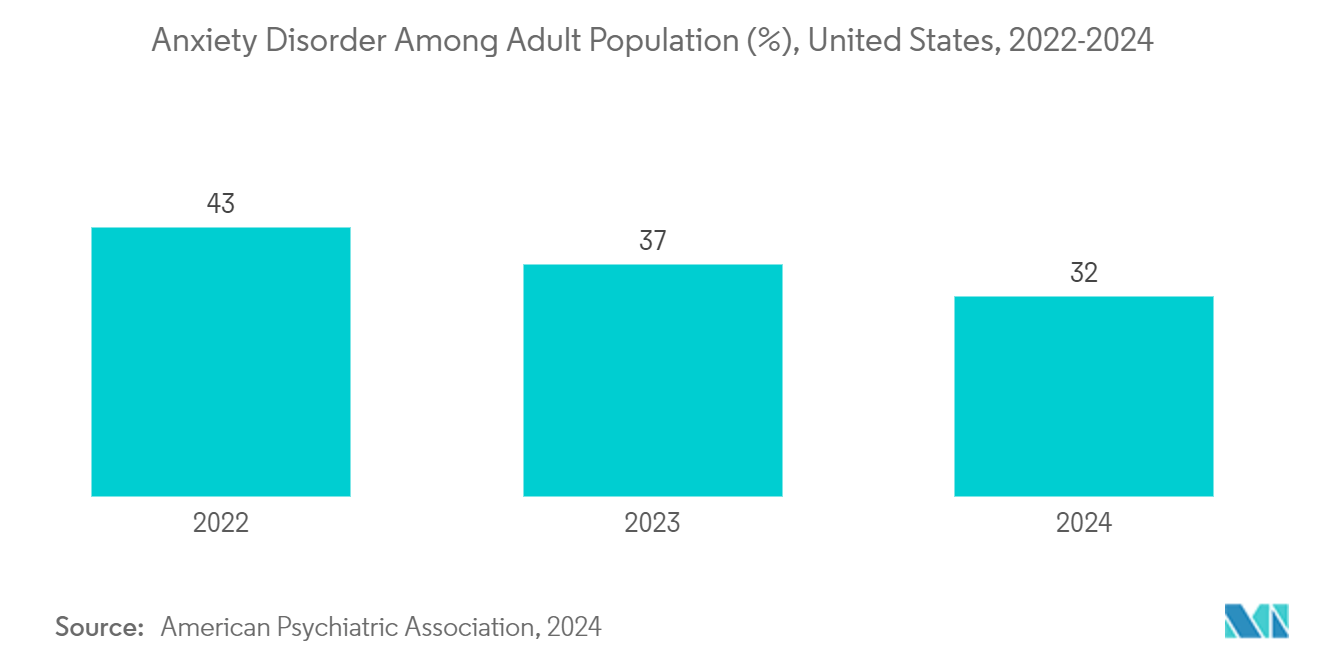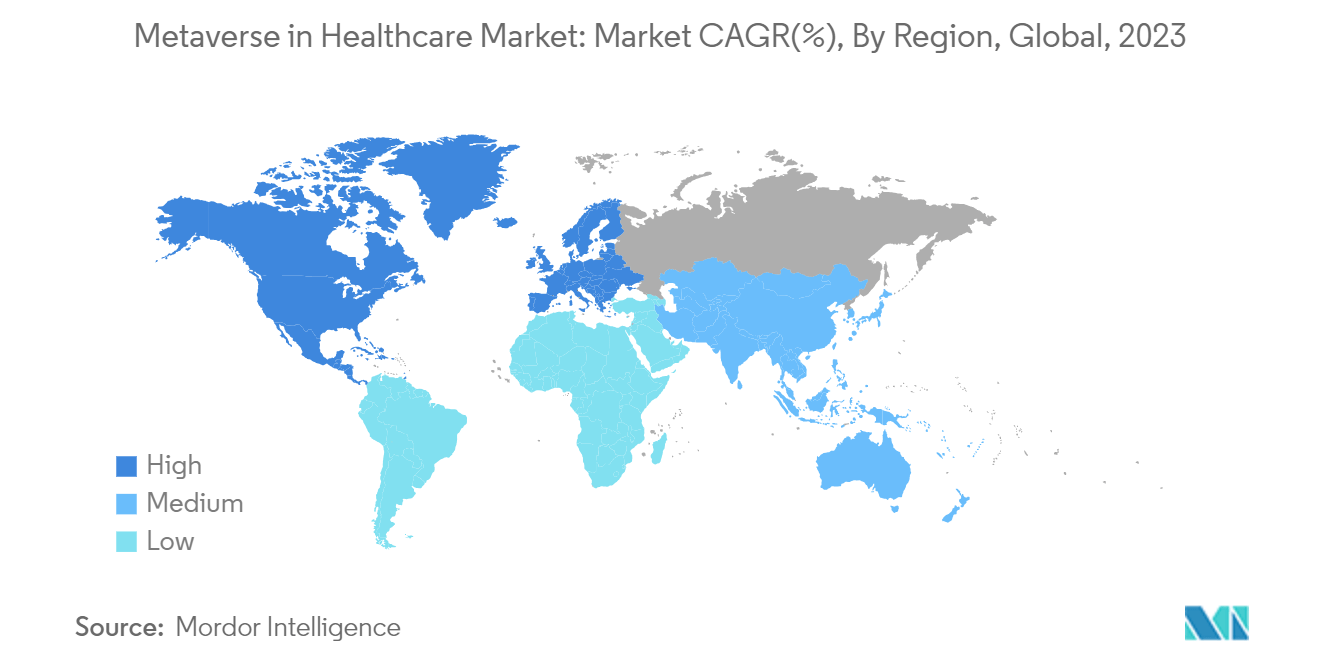Market Trends of Metaverse In Healthcare Industry
The Mental Health and Rehabilitation Segment is Expected to Witness Significant Growth During the Forecast Period
Mental health and rehabilitation are increasingly driving demand for metaverse in healthcare by providing immersive, interactive environments that enhance treatment and engagement. The segment is poised for growth, driven by the rising adoption of virtual therapy and exposure sessions, a surge in studies assessing augmented reality (AR) and virtual reality (VR) role in mental health, proactive government initiatives, and a notable uptick in the launch of mental health applications and services leveraging metaverse technology.
Virtual reality (VR) has emerged as a promising tool in the field of mental health. A key feature of this technology is immersive environments, which enable exposure to highly controlled virtual experiences that feel real. Various research studies have assessed the efficacy of virtual and augmented reality in treating mental health issues. For instance, an article published in Sage Journals in September 2023 reported that AR is effective in addressing anxiety and phobias among mental health patients. Its gamification potential particularly boosts children's enthusiasm, leading to heightened mental health treatment engagement. In addition, portable, cost-effective, and user-friendly AR devices offer a significant advantage as they serve as a personalized intervention tool, granting patients flexibility in treatment timing and environment and allowing them to progress at their own pace. Given AR's pronounced effectiveness in addressing mental health challenges, its demand is poised to surge, subsequently driving the segment's growth in the coming years.
As the demand for digital innovation and improved healthcare access grows, the delivery of care is undergoing a significant transformation. Individuals now have more ways to access care, be it virtually, in person, or a blend of both. For instance, in January 2023, CVS Health unveiled its CVS Health Virtual Primary Care platform. This new virtual platform offers primary care, round-the-clock on-demand services, and pre-scheduled mental health consultations. With this initiative, CVS Health aims to broaden its virtual mental health offerings, ensuring availability every day of the week and featuring a team of professionals that includes licensed therapists and psychiatrists.
Moreover, the rise of technologically advanced applications catering to diverse mental health needs is expected to fuel the metaverse's expansion in healthcare, driving the market's growth. For instance, in February 2024, clinicians from Cedars-Sinai, in collaboration with AI specialists, unveiled Xaia (eXtended-Reality Artificially Intelligent Ally). This innovative application leverages the distinct features of Apple Vision Pro to cater to patients' mental health requirements. Designed for self-administered, AI-driven conversational therapy, Xaia immerses patients in soothing environments. These settings facilitate deep breathing exercises and meditation. Additionally, the application provides an engaging therapy session guided by a digital avatar meticulously developed to emulate a human therapist. Such innovations are poised to increase the demand among the target demographic, subsequently accelerating the segment's growth during the forecast period.
Therefore, owing to the increasing adoption of AR and VR in mental health and the launch of various applications and services, the studied segment is expected to grow during the forecast period.

North America is Expected to Hold a Significant Share in the Market During the Forecast Period
North America is expected to witness significant growth in the market. Factors such as the growing adoption of telehealth, rising launches of various virtual reality and augmented reality programs and platforms, and growing government initiatives to launch various at-home-based metaverse programs to provide medical services to the population are expected to drive the market's growth during the forecast period.
Companies and medical centers are launching various virtual health platforms and services, enhancing public access to various treatments and services in the region. This trend is poised to drive the market's growth during the forecast period. For instance, in August 2024, Pfizer introduced its virtual health platform, PfizerForAll, to connect US patients with diverse healthcare services. These services include scheduling doctor’s appointments, locating vaccines, and ordering tests and treatments. The platform emphasizes treatments for prevalent conditions such as migraines, COVID-19, and the flu, alongside offering vaccines for COVID-19, flu, respiratory syncytial virus, and pneumococcal pneumonia.
In addition to the above context, Pfizer’s platform is set to offer live customer support and resources to assist users with insurance coverage navigation. Such advancements are anticipated to expand digital options for patients in managing their care, thereby fueling the market's growth.
Similarly, in November 2023, the National Committee for Quality Assurance (NCQA) unveiled its Virtual Care Accreditation Pilot program to establish a quality improvement framework tailored for organizations delivering care through telehealth and digital platforms. By launching the Virtual Care Accreditation, NCQA underscores the importance of virtual modalities in healthcare, emphasizing their role in identifying care gaps, ensuring high-quality service, and effectively tracking outcomes. This move is poised to accelerate the growth of the metaverse within the healthcare sector during the forecast period.
Furthermore, government initiatives aimed at introducing augmented reality (AR) and virtual reality (VR) programs for home use are poised to enhance patients' lives, thereby driving the market's growth. For instance, in April 2024, the United States Food and Drug Administration (FDA) launched Home as a Healthcare Club initiative. This program emphasizes leveraging AR and VR to promote health equity by reimagining homes as integral components of the healthcare system. The initiative envisions an AR/VR-enabled home prototype, targeting populations most affected by health disparities. It also seeks to offer insights to medical device developers, healthcare providers, and policymakers for developing home-based solutions that prioritize health equity. Such initiatives are expected to have a positive impact on the growth of the market during the forecast period.
Therefore, with the launch of various virtual health platforms and services and the introduction of at-home AR and VR programs, the market is expected to grow during the forecast period.


